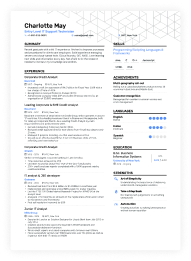Process Improvement Skills: Example Usage on Resumes, Skill Set & Top Keywords in 2024
Including process improvement on your resume signals to recruiters that you possess a proactive attitude and a focus on efficiency in problem-solving. Dive into the guide below to discover powerful ways to frame your skills and elevate your job application.
Pub : 11/27/2019 •
Upd : 5/15/2024
8 min read

Is your resume ATS-friendly?
Drop your resume here or upload a file to find out if the skills in your resume are readable by an ATS.
Upload Your Resume
In This Guide:
- Misusage of process improvement on resumes
- How to demonstrate process improvement skills on your resume
- Why this summary is effective for a candidate with Excel skills:
- What are the relevant certifications for process improvement skills on resume
- Most relevant jobs for process improvement skills
- Key takeaways
Land Your Dream Job
Build your resume and cover letter using Enhancv and make job searching a breeze.


Process improvement is a skill that focuses on analyzing and enhancing business processes to increase efficiency and quality. It involves identifying bottlenecks, streamlining workflows, and implementing solutions that result in better performance and outcomes. By developing the ability to improve processes, individuals can help businesses save time and resources, while also reducing errors and improving customer satisfaction. It's a valuable skill because it demonstrates a person's capability to contribute to the bottom line and promote growth within an organization.
Including the process improvement skill on your resume can show potential employers that you have a proactive approach to problem-solving and are equipped with the ability to make significant contributions to a company. However, be cautious about overemphasizing this skill if you cannot substantiate it with concrete examples or if it overshadows other important qualifications. Instead of just listing 'process improvement' as a standalone skill, it can be more effective to integrate examples of how you've applied this skill into your work experience. This approach not only validates your claim but also gives a clearer picture of your capabilities to employers.
In this article, you will learn:
- The potential drawbacks of adding "process improvement" to your resume without supporting evidence.
- How to effectively showcase your process improvement skills with real-world examples.
- Synonyms and alternative phrases to describe your process improvement abilities.
Misusage of process improvement on resumes
Process improvement skills are a critical asset, reflecting an ability to enhance workflows and increase efficiency within an organization. However, showcasing this skill on your resume requires careful consideration to avoid misrepresentation. Overstating your abilities or inserting phrases that don't accurately reflect your experience can undermine your credibility and potentially lead to challenges in a new role if you can't deliver on promised proficiency levels.
- In the summary section, an example of misuse would be claiming "Revolutionized company procedures with innovative process improvement techniques" when you've only played a minor role in these projects.
- Within the experience section, stating "Led a high-impact team in deploying advanced process improvement strategies to double productivity" can be misleading if the productivity increase was marginal or not directly linked to your input.
- For the achievements section, writing "Awarded Process Improvement Expert of the Year for pioneering industry-leading practices" is an overstatement if the award was for a team effort or for a smaller, internal company recognition rather than an industry-wide accolade.
How to demonstrate process improvement skills on your resume
- Quantify your achievements by detailing how you've improved efficiency, reduced costs, or accelerated processes with specific percentages and metrics.
- Highlight any certifications or training you have in process improvement methodologies like Lean, Six Sigma, or Kaizen.
- Describe how you identified opportunities for improvement, developed a plan of action, and led cross-functional teams to implement changes.
- Share examples of how you've analyzed data to make informed decisions which led to process enhancements.
- Include any tools or software you've used to map out processes, track performance, and report on progress improvements.




